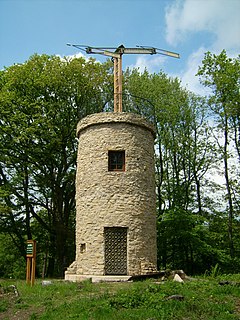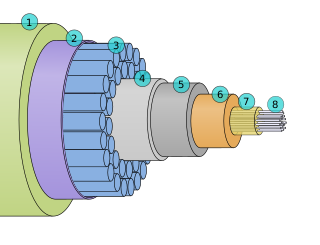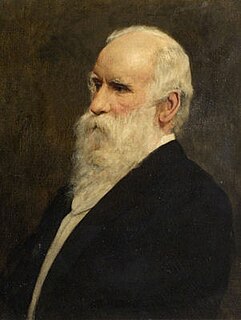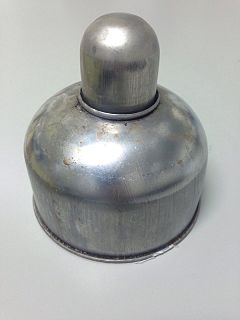
An electrical telegraph is a telegraph that uses electrical signals, usually conveyed via dedicated telecommunication circuit or radio.

Telegraphy is the long-distance transmission of textual or symbolic messages without the physical exchange of an object bearing the message. Thus semaphore is a method of telegraphy, whereas pigeon post is not.

A submarine communications cable is a cable laid on the sea bed between land-based stations to carry telecommunication signals across stretches of ocean and sea. The first submarine communications cables laid beginning in the 1850s carried telegraphy traffic, establishing the first instant telecommunications links between continents, such as the first transatlantic telegraph cable which became operational on 16 August 1858. Subsequent generations of cables carried telephone traffic, then data communications traffic. Modern cables use optical fiber technology to carry digital data, which includes telephone, Internet and private data traffic.

Sir Charles Wheatstone FRS, was an English scientist and inventor of many scientific breakthroughs of the Victorian era, including the English concertina, the stereoscope, and the Playfair cipher. However, Wheatstone is best known for his contributions in the development of the Wheatstone bridge, originally invented by Samuel Hunter Christie, which is used to measure an unknown electrical resistance, and as a major figure in the development of telegraphy.

A transatlantic telegraph cable is an undersea cable running under the Atlantic Ocean used for telegraph communications. The first was laid across the floor of the Atlantic from Telegraph Field, Foilhommerum Bay, Valentia Island in western Ireland to Heart's Content in eastern Newfoundland. The first communications occurred August 16, 1858, reducing the communication time between North America and Europe from ten days – the time it took to deliver a message by ship – to a matter of minutes. Transatlantic telegraph cables have been replaced by transatlantic telecommunications cables.

A bung, stopper or cork is a truncated cylindrical or conical closure to seal a container, such as a bottle, tube or barrel. Unlike a lid, which encloses a container from the outside without displacing the inner volume, a bung is partially inserted inside the container to act as a seal.

Robert Stirling Newall FRS FRAS was a Scottish engineer and astronomer.

Willoughby Smith was an English electrical engineer who discovered the photoconductivity of the element selenium. This discovery led to the invention of photoelectric cells, including those used in the earliest television systems.
Charles Vincent Walker FRS was an English electrical engineer and publisher, a major influence on the development of railway telecommunications, he was also the first person to send a submarine telegraph signal.

A high-voltage cable is a cable used for electric power transmission at high voltage. A cable includes a conductor and insulation, and is suitable for being run underground or underwater. This is in contrast to an overhead line, which does not have insulation. High-voltage cables of differing types have a variety of applications in instruments, ignition systems, and alternating current (AC) and direct current (DC) power transmission. In all applications, the insulation of the cable must not deteriorate due to the high-voltage stress, ozone produced by electric discharges in air, or tracking. The cable system must prevent contact of the high-voltage conductor with other objects or persons, and must contain and control leakage current. Cable joints and terminals must be designed to control the high-voltage stress to prevent breakdown of the insulation. Often a high-voltage cable will have a metallic shield layer over the insulation, connected to the ground and designed to equalize the dielectric stress on the insulation layer.

Sir Richard Atwood Glass was an English telegraph cable manufacturer and a Conservative politician who sat in the House of Commons from 1868 to 1869.

Enderby's Wharf is a wharf and industrial site on the south bank of the Thames in Greenwich, London, associated with Telcon and other companies. It has a history of more than 150 years of production of submarine communication cables and associated equipment, and is one of the most important sites in the history of submarine communications.

William Montgomerie (1797–1856) was a nineteenth century Scottish military doctor with the East India Company, and later head of the medical department at Singapore. He is best known for promoting the use of gutta-percha in Europe. This material was an important natural rubber that made submarine telegraph cables possible.

The India Rubber, Gutta Percha and Telegraph Works Company was a London-based company based in Silvertown, East London. It was founded by Stephen William Silver in March 1864 as Silver's Indiarubber Works and Telegraph Cable Company Ltd. However in July that year the name was changed to the India Rubber, Gutta Percha and Telegraph Works Company.
The Submarine Telegraph Company was formed by Jacob and John Watkins Brett to lay the first submarine telegraph cable across the English Channel. An unarmoured cable with gutta-percha insulation was laid in 1850. The recently introduced gutta-percha was the first thermoplastic material available to cable makers and was resistant to seawater. This first cable was a failure and was soon broken by a fishing boat.
The Gutta Percha Company was an English company formed in 1845 to make a variety of products from the recently introduced natural rubber gutta-percha. Unlike other natural rubbers, this material was thermoplastic allowing it to be easily moulded. Nothing else like it was available to manufacturing until well into the twentieth century when synthetic plastics were developed.

The British and Irish Magnetic Telegraph Company was the principal competitor to the Electric Telegraph Company in Britain. Between them, they dominated the market until the telegraph was nationalised in the United Kingdom in 1870.

Electrical telegraphy in the United Kingdom led the world in the first half of the nineteenth century. Electrical telegraphy is telegraphy over conducting wires. It is distinct from the optical telegraphy that preceded it and the radiotelegraphy that followed it. Francis Ronalds first demonstrated a working telegraph over a substantial distance in 1816, but was unable to put it into use. William Fothergill Cooke, starting in 1836, developed the first commercial telegraph put into operation with the scientific assistance of Charles Wheatstone, the battery invented by John Frederic Daniell, and the relay invented by Edward Davy.



















